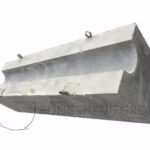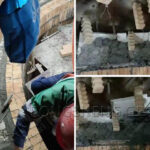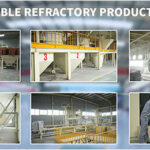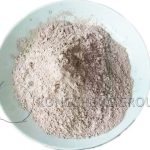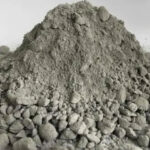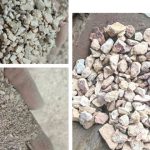Micro-expansion refractory plastic has good high-temperature properties, such as refractoriness, thermal shock stability, etc. It shows good strength at high, medium, and low temperatures. When used above 1200°C, the material shows micro-expansion properties and shows a positive linear change after cooling. It is divided into ordinary micro-expansion refractory plastics and fast-hardening micro-expansion refractory plastics. Rongsheng unshaped refractory materials manufacturer has rich production and sales experience. For customized high-temperature furnace lining refractory plastic solutions, please contact us.
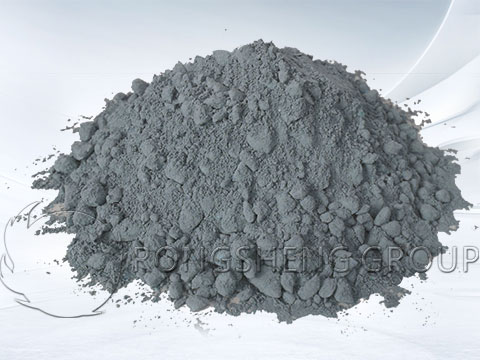
Classification of Micro-Expansion Refractory Plastics
Ordinary micro-expansion refractory plastic
Ordinary micro-expansion refractory plastic is in the form of mud paste. It is more convenient for construction and use, but it is not easy to store. If it is placed improperly, the combined talent will become hard and cannot be used. The drying time of this material is too long, usually 15 to 20 days. This results in the following disadvantages:
(1) Undried materials are afraid of water and cannot be constructed in rainy season, which will delay the construction period.
(2) After the material is poured, its strength cannot keep up and subsequent construction cannot be carried out, which affects the construction progress.
(3) The drying speed on the surface and inside of the material is inconsistent, causing stress and surface cracks, affecting the construction quality.
Fast-hardening micro-expansion refractory plastic
Fast-hardening micro-expansion refractory plastic Compared with the former, fast-hardening micro-expansion refractory plastic overcomes the shortcomings of the original materials. In addition to the above characteristics, it also has the following characteristics:
- Material status. The improved plastic is a bagged bulk material made from aggregates, powders, and additives through strict proportioning and other treatments. When using, just add appropriate amount of water and mix well. And it can be cast or pounded according to construction requirements.
- Short curing time. The improved plasticity has a curing time of generally (4~10h), which can also be adjusted according to construction needs. Due to its built-in additives, the curing speed is greatly improved. At the same time, the surface and interior can be consistent without any surface cracks. In addition, the rapidly cured masonry is not afraid of rain and can be constructed even in the rainy season. Improved project quality and progress.
- Easy to store and transport. The material is packed in bulk and is easy to store and transport. If it is not exposed to water or rain, it can be stored for about 1 year.
- Save on usage. The material is dry powder and contains very little moisture. Therefore, the amount of plastic used is about 1/4 less than that of ordinary micro-expansion refractory plastic.
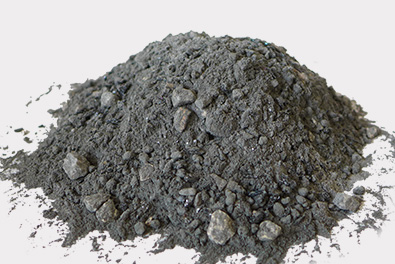
Preparation Process of Micro-Expansion Refractory Plastic
The preparation of micro-expansion refractory plastic uses bauxite clinker, kyanite powder ore, clay, and a certain amount of other mineral raw materials as powder. Kyanite undergoes phase transformation at high temperatures to form mullite with good high-temperature properties and is accompanied by volume expansion. Kyanite (between 0.149-0.177mm), has physical properties at different temperatures. A few particles of kyanite begin to undergo phase change at 1200°C, and the phase change is completed at 1300~1500°C. 1411°C is the maximum temperature of the peak phase variable of kyanite. The expansion rate of kyanite is the largest at 1400~1500℃, and the specific gravity decreases as the temperature increases.
The clay minerals were analyzed by transmission electron microscopy and X-ray diffraction as tubular disordered kaolinite. It has strong plasticity at room temperature and begins to undergo phase transformation at 987°C to form mullite and free SiO2. SiO2 forms cristobalite at about 1300°C. Under heating conditions, kaolinite shrinks as water escapes. At 1200℃, the shrinkage rate reaches 15.6%. In order to increase the plasticity of the material without reducing its fire resistance and micro-expansion, some auxiliary additives are added. For example, a binder needs to be added to make the aggregate and powder have plasticity without affecting high-temperature performance, and have a certain storage period. A composite binder in which organic and inorganic binders are mixed in a certain proportion was selected. The binding agent has adsorption properties, water retention properties, and good sintering performance of the material. Before configuration, the clay raw materials must be pretreated and the clinker must be calcined. Then, prepare according to the process flow. The additional amount of kyanite is 25~35%, and the most suitable particle size is 2~0.08mm
The development and use of micro-expansion plastics solve the problem of a large linear expansion coefficient after the original ordinary refractory plastics oven. And while ensuring that the strength remains unchanged, the linear expansion coefficient is still positive.
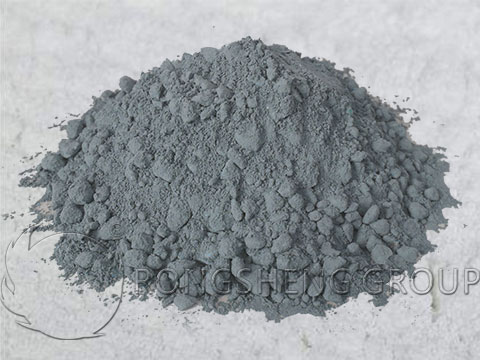
Performance and Characteristics of High-Temperature Micro-Expansion Refractory Plastic
High-temperature micro-expansion refractory plastics are divided into ordinary micro-expansion plastics and quick-hardening micro-expansion plastics. Generally, micro-expansion plastics are in the form of paste, and the construction of plastics is very convenient. The disadvantage is that special attention must be paid to storage. Improper storage will cause the fire-resistant plastic to be too hard to be used. Or when using it in a hurry, the dryness does not meet the requirements.
High-temperature micro-expansion refractory plastic is also called fast-hardening micro-expansion plastic. In fact, it is improved on the basis of the original ordinary micro-expandable plastic. It is carefully prepared according to the technological formula and is in the form of bulk materials like refractory castables. When using, add a certain amount of water and mix thoroughly before use, which greatly improves the convenience of using and constructing refractory plastics. At the same time, the flexible use method also saves the use of refractory plastics and reduces the purchase cost of refractory materials for users.
High-temperature micro-expansion refractory plastic is made of bauxite clinker as the main material, and an appropriate proportion of kyanite powder, binders, additives, etc. are added. Kyanite in refractory plastics undergoes phase change at high temperatures, producing a mullite phase with excellent high-temperature properties and micro-expansion.
High temperature micro-expansion refractory plastic, operating temperature is between 1200-1500 degrees. The excellent plasticity and ductility of refractory plastic ensures the convenience of construction of refractory plastic. As a type of air-hardening material in refractory castables, refractory plastics produce micro-expansion at high temperatures, have good strength, and have good sealing properties. Refractory plastics are widely used in high-temperature areas of industrial kilns such as boiler tops and heating furnace tops.
The biggest difference between high-temperature micro-expansion refractory plastics and general refractory plastics is that during the later oven and use processes, its special formulation process effectively changes the general refractory plastics’ excessive expansion coefficient and high temperature after baking. Problems such as insufficient strength.
Rongsheng Unshaped Refractory Lining Material Manufacturer
Rongsheng Manufacturer is a powerful manufacturer and seller of unshaped refractory materials. Its environmentally friendly, fully automatic unshaped refractory material production line provides reliable guarantee for high-quality unshaped refractory lining materials. Moreover, the professional technical team of Rongsheng Manufacturer can customize amorphous refractory lining solutions for high-temperature industrial furnace linings. Contact us to get free samples and quotations of micro-expansion refractory plastics.

